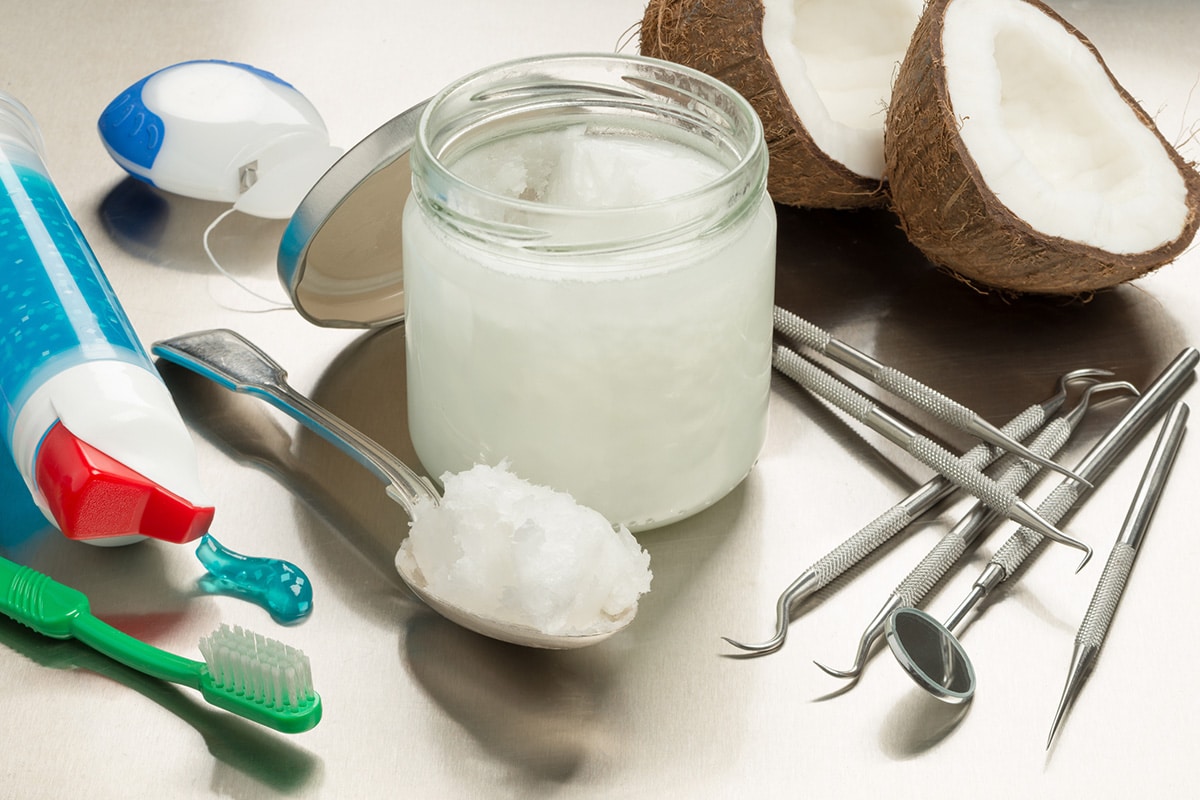Oil Pulling: An In-Depth Look at Its Efficacy in Oral Health

By: Lana Alter
Introduction
Oil pulling, an ancient Ayurvedic practice, has gained significant attention in recent years due to claims of its potential to improve oral health and treat various systemic conditions. The practice involves swishing oil around the mouth for a set duration, typically ranging from 5 to 20 minutes, before spitting it out. Common oils used in this regimen include coconut oil, sesame oil, and sunflower oil. Proponents suggest that oil pulling can whiten teeth, remove bacteria, improve gum health, and even detoxify the body. Despite these claims, scientific evidence supporting oil pulling as a viable oral health practice remains limited. This article delves into the existing research on oil pulling, its purported benefits, risks, and its overall role in maintaining oral hygiene.

History and Practice of Oil Pulling
Oil pulling is a traditional remedy originating from Ayurvedic medicine, a holistic health system that dates back 3,000 to 5,000 years in India. The practice is said to help remove toxins, or “ama,” from the body by swishing oil through the teeth and mouth. There are two common methods of oil pulling: Kavala Graha and Gandusha. Kavala Graha involves placing a small amount of oil in the mouth, swishing it for a few minutes, and then spitting it out. Gandusha involves filling the mouth with oil and swishing it for a longer period before expectorating it. Modern practices, particularly in Western cultures, have evolved to recommend coconut oil due to its purported antimicrobial properties, particularly lauric acid, which is known for its anti-inflammatory and antibacterial effects.

The Science Behind Oil Pulling
Several studies have investigated the potential benefits of oil pulling in oral health. A systematic review published in 2016 examined randomized clinical trials assessing the efficacy of oil pulling in improving oral hygiene and reducing plaque. The review found that oil pulling could reduce plaque and gingivitis to a degree similar to chlorhexidine mouthwash, which is widely used in clinical settings. However, the studies included in the review varied in quality, and many had small sample sizes or poor study designs, leading to inconclusive results (Gbinigie et al., 2016).
A more recent systematic review in 2023 confirmed these findings, noting that while some studies showed positive effects of oil pulling on plaque control, gingival health, and bacterial reduction, the evidence was not robust enough to replace standard oral hygiene practices like tooth brushing and flossing. The review concluded that more rigorous trials are needed to establish the effectiveness of oil pulling compared to other oral hygiene practices (Jong et al., 2023).
Potential Benefits of Oil Pulling
- Reduction of Plaque and Gingivitis: Some studies have suggested that oil pulling may help reduce plaque buildup and alleviate gingivitis. A study by Peedikayil et al. (2015) found that coconut oil was effective in reducing plaque-related gingivitis, supporting the notion that oil pulling could be a complementary therapy to traditional oral hygiene methods.
- Antibacterial Effects: One of the key reasons for the popularity of coconut oil in oil pulling is its antimicrobial properties. Lauric acid, a fatty acid found in coconut oil, has been shown to have anti-inflammatory and antibacterial effects, particularly against oral pathogens like Streptococcus mutans and Candida albicans, which are linked to dental caries and oral thrush, respectively (Asokan et al., 2011).
- Oral Malodor: Another purported benefit of oil pulling is its ability to reduce halitosis (bad breath). The process of oil pulling may help to reduce volatile sulfur compounds, which are responsible for bad breath. Some studies suggest that oil pulling may be as effective as chlorhexidine in combating halitosis, without the associated side effects such as staining of the teeth (Peedikayil et al., 2015).

The Risks and Limitations of Oil Pulling
While oil pulling is generally considered safe, there are a few potential risks associated with the practice. One concern is the aspiration of oil, which could lead to a rare but serious condition called lipoid pneumonia. This occurs when oil is accidentally inhaled into the lungs, causing inflammation. Although such cases are rare, it is important to be mindful of the potential for aspiration, especially if performing the practice for extended periods.
Another limitation is the lack of conclusive scientific evidence supporting the broad claims made about oil pulling. While some studies have shown positive effects, many of the trials have been criticized for their small sample sizes, methodological flaws, and biases. The American Dental Association (ADA) has stated that there is insufficient evidence to support oil pulling as an effective oral hygiene practice and recommends sticking to more established methods, such as brushing and flossing (American Dental Association, 2023).
Is Oil Pulling an Effective Alternative to Traditional Oral Hygiene?
Despite the potential benefits, oil pulling should not be viewed as a replacement for traditional oral hygiene practices. The ADA and most dental professionals emphasize the importance of brushing teeth twice a day with fluoride toothpaste, flossing daily, and visiting the dentist regularly. Oil pulling can be used as an adjunct to these practices but should not replace them.
A review of the literature found that oil pulling is not a substitute for tooth brushing or other oral hygiene practices. While it may have some benefits, it does not provide the same level of protection against tooth decay and gum disease as brushing with fluoride toothpaste and flossing (Gbinigie et al., 2016).
Conclusion
Oil pulling is an ancient Ayurvedic practice that has gained popularity in recent years due to its purported benefits for oral health. While there is some evidence to suggest that oil pulling may help reduce plaque, improve gum health, and fight oral bacteria, the overall scientific support for these claims remains limited. Many studies on oil pulling suffer from small sample sizes and methodological flaws, and more rigorous trials are needed to determine its effectiveness compared to traditional oral hygiene practices.

At present, oil pulling should be viewed as a complementary practice rather than a primary oral hygiene method. It can be used alongside brushing, flossing, and regular dental visits, but it should not replace these essential habits. Patients interested in oil pulling should be aware of the potential risks, including the rare occurrence of lipoid pneumonia, and should consult with their dentist before incorporating it into their oral care routine.
References
- American Dental Association. (2023). Oil Pulling. MouthHealthy. Retrieved from https://www.mouthhealthy.org/all-topics-a-z/oil-pulling
- Asokan, S., Rathinasamy, T.K., Inbamani, N., et al. (2011). Mechanism of Oil-pulling Therapy – In Vitro Study. Indian Journal of Dental Research, 22(1), 34-37.
- Gbinigie, O., Onakpoya, I., Spencer, E., McCall MacBain, M., Heneghan, C. (2016). Effect of oil pulling in promoting oro dental hygiene: A systematic review of randomized clinical trials. Complementary Therapies in Medicine, 26, 47–54.
- Jong, F.J.X., Ooi, D.J., Teoh, S.L. (2023). The Effect of Oil Pulling in Comparison with Chlorhexidine and Other Mouthwash Interventions in Promoting Oral Health: A Systematic Review and Meta‐analysis. International Journal of Dental Hygiene.
- Peedikayil, F.C., Sreenivasan, P., Narayanan, A. (2015). Effect of Coconut Oil in Plaque Related Gingivitis – A Preliminary Report. Nigerian Medical Journal, 56(2), 143-147.
- Shanbhag, V.K.L. (2017). Oil Pulling for Maintaining Oral Hygiene – A Review. Journal of Traditional and Complementary Medicine, 7(1), 106-109.


